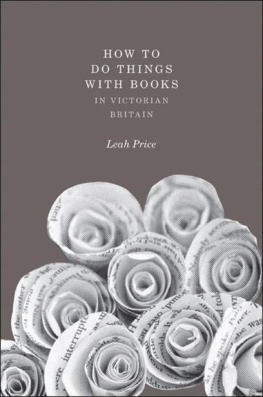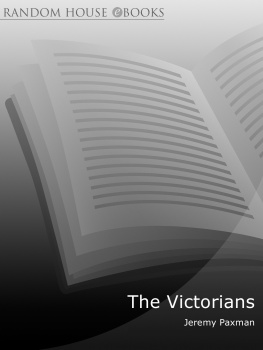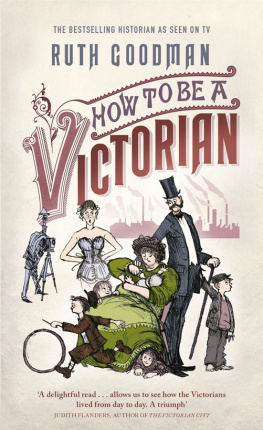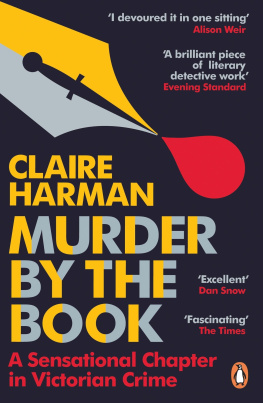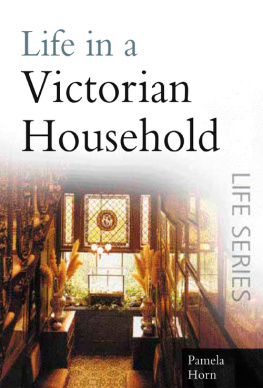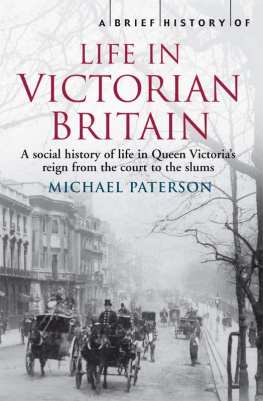How to Do Things with Books in Victorian Britain
How to Do Things with Books
in Victorian Britain
Leah Price
PRINCETON UNIVERSITY PRESS
Princeton and Oxford
Copyright 2012 by Princeton University Press
Published by Princeton University Press, 41 William Street, Princeton, New Jersey 08540
In the United Kingdom: Princeton University Press, 6 Oxford Street, Woodstock, Oxfordshire OX20 1TW
press.princeton.edu
All Rights Reserved
Second printing, and first paperback printing, 2013
Paperback ISBN 978-0-691-15954-6
The Library of Congress has cataloged the cloth edition of this book as follows
Price, Leah.
How to do things with books in Victorian Britain / Leah Price.
p. cm.
Includes bibliographical references and index.
ISBN 978-0-691-11417-0 (acid-free paper)1. Books and readingGreat BritainHistory19th century.2. BooksGreat BritainPsychological aspectsHistory19th century.3. BooksSocial aspectsGreat BritainHistory19th century.4. Book industries and tradeGreat BritainHistory19th century.5. English fiction19th centuryHistory and criticism.6. Books and reading in literature. 7. Books in literature.I. Title.
Z1003.5.G7P75 2012
028'.9094109034dc23
2011037436
British Library Cataloging-in-Publication Data is available
This book has been composed in New Century Schoolbook
Printed on acid-free paper.
Printed in the United States of America
10 9 8 7 6 5 4 3 2
Contents
Readers Block
Anthony Trollope and the Repellent Book
DavidCopperfield and the Absorbent Book
It-Narrative and the Book as Agent
The Book as Burden: Junk Mail and Religious Tracts
The Book as Go-Between: Domestic Servants and Forced Reading
The Book as Waste: Henry Mayhew and the Fall of Paper Recycling
Illustrations
Acknowledgments
Many readers helped me write. Thanks especially to Srinivas Aravamudan, Margaret Beetham, Peter de Bolla, Larry Buell, Amanda Claybaugh, Nancy Cott, Patricia Crain, Nicholas Dames, Robert Darnton, Ian Duncan, Drew Faust, William Flesch, John Forrester, Elaine Freedgood, Debra Gettelman, Lisa Gitelman, Simon Goldhill, David Hall, Susan Halpert, Richard Hardack, Barbara Hochman, Isabel Hofmeyr, Hansun Hsiung, Virginia Jackson, Melissa Jenkins, Jane Kamensky, Sol Kim-Bentley, Michle Lamont, Michael Ledger-Lomas, Yoon Sun Lee, Spencer Lenfield, Lauren Lepow, Seth Lerer, Deidre Lynch, Alison MacKeen, Peter Mandler, Jane Mansbridge, Sharon Marcus, Maia McAleavey, Deborah Nord, Geoff Nunberg, Alexander Parker, Clare Pettitt, John Plotz, Christopher Prendergast, Peter Pruyn, Harriet Ritvo, Catherine Robson, Jan Schramm, Jason Scott-Warren, James Secord, Sharmila Sen, Stuart Shieber, James Simpson, Diana Sorensen, Peter Stallybrass, William St Clair, Christopher Stray, Michael Suarez, Ramie Targoff, Pam Thurschwell, Katie Trumpener, Judy Vichniac, David Vincent, Michael Warner, Hanne Winarsky, and Ruth Yeazell. Thanks, too, to Kings College, Cambridge, the Radcliffe Institute, the Stanford Humanities Center, and the National Endowment for the Humanities.
Earlier versions of material from chapters 2, 4, and 7 appeared in Reading Victorian Feeling, edited by Rachel Ablow (Ann Arbor: University of Michigan Press, 2010), 4768; Representations 108 (Fall 2009): 12038; and BookishHistories, edited by Ina Ferris and Paul Keen (New York: Palgrave, 2009), 14868. Thanks to all three for permission to reprint.
Ann Blair has been the best possible coconspirator in all things book-historical. Natalka Freelands friendship remains as strong as her misreadings. Nir Eyals love and example teach me daily how to do things with words and without.
Introduction
Upon coming into his masters fortune, Dickenss illiterate dustman Mr. Boffin immediately hires a ballad-seller to entertain him by reading aloud. Only one detail remains to be checked: You are provided with the needful implementa book, sir?
Bought him at a sale, said Mr. Boffin. Eight wollumes. Red and gold.
Purple ribbon in every wollume, to keep the place where you leave off.
Do you know him?
The books name, sir? inquired Silas.
I thought you might have knowd him without it, said Mr. Boffin slightly disappointed. His name is Decline-And-Fall-Off-The-Rooshan-Empire. (Dickens, OurMutualFriend 59)
Because no one reading this passage shares Mr. Boffins illiteracy, and because few readers of late Dickens have not read at least the spines of Gibbon, we smile. But what if the geographical confusion made bibliographical sense? As a waste-dealer familiar with tanners, Mr. Boffin would have heard of Russia as a metonymy for a leather produced in that country, calfskin (often dyed red) tanned with birch oil that imparted a characteristic smell. In this hypothesis, the hope that you might have knowd him would look perfectly reasonable: cannier than Silas, Mr. Boffin does recognize the book without, if not within. In what I did know, David Copperfield reflects upon leaving warehouse for school, I was much farther removed from my companions than in what I did not (Dickens, DavidCopperfield 218). If we took Russia to refer to container rather than contents, then the dustmans class position would reflect less a deficiency of interpretive skill than an excess of sensitivity to color, texture, and smell. His ignorance of the history in the book would throw into relief how much he knows about the history of the book. Bought him at a sale: Boffin knows not only how the wollumes were manufactured, but whether he is their first owner. Once endowed with a life story, even a book judged by his cover can elicit affection.
When Silas later arrives to take up his task, it remains unclear whether the gorging Lord-Mayors-Show of wollumes (probably meaning gorgeous, but misled by association of ideas) will end up on Mrs. Boffins side of the room (whose shelves display stuffed birds) or Mr. Boffins (lined with cold joints). As binding is to text, so gorgeous to gorging: do books resemble decorative outsides or functional insides? Should the volumes that Boffin has ranged flat, in a row, like a galvanic battery be treated as an implement or a show?
In short, what meanings do books make even, or especially, when they go unread? And why did Victorian novelists care? That books function both as trophies and as tools, that their use engages bodies as well as minds, and that printed matter connects readers not just with authors but with other owners and handlersthese facts troubled a genre busy puzzling out the proper relation of thoughts to things, in an age where more volumes entered into circulation (or gathered dust on more shelves) than ever before.
Its not that they hated books. But the great realists did loathe anyone who loved the look of bookswho displayed a great, large handsome Bible, all grand and golden, with its leaves adhering together from the bookbinders press, or whose splendidly bound books furnished the heavily carved rosewood table (Gaskell, NorthandSouth 79; Jewsbury 13, 37). One wellborn narrator remarks, in the house of a wealthy tradesman, that the round rosewood table was in a painfully high state of polish; the morocco-bound picture books that lay on it, looked as if they had never been moved or opened since they had been bought; not one leaf even of the music on the piano was dogs-eared or worn (W. Collins, Basil 61). Book against text, new money against old moneyand secondary characters against protagonist. The opening scene of Ranthorpe establishes the heros depth by describing what aspects of books he fails to notice. He cared not for rare editions, large paper copies, or sumptuous bindings... he cared not even whether they had covers at all (Lewes 45).
Next page
